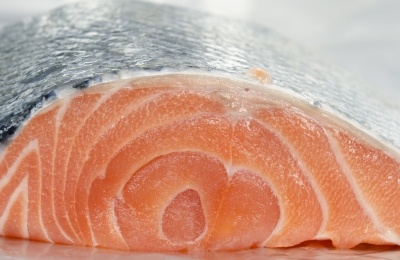
♦ Sea lice pose a major threat to salmon stocks and cause a price hike.
Salmon was treated many years ago as a luxury item, fit for the high table and served on holidays, high days and anniversaries. Farming in lakes, lochs and the sea changed all that. The price plummeted and salmon became one of the ‘cheap’ fish, full of health and offering unheralded opportunities for culinologists and nutritionists alike. It became a growth industry, especially for key countries such as Scotland, Chile and Norway. All were able to assuage the appetites of the consumer seeking the deliciousness in the soft pink flesh of this excellent fish. We’ve grown used to our salmon en papillote, sizzling on barbecues or served up on bagels with dill.
However, salmon farming has been bedevilled by issues, not least, the infestations caused by sea lice. Last year, 2016, saw a considerable rise in the cost of salmon by as much as 50% in some cases because of sea lice damage and the steps needed to control it. The fish industry analysts from the Norwegian bank Nordea believe that global supplies of Atlantic salmon will fall even further than the 9% last year because the lice issue just gets worse.
Sea Lice or Lepeophtheirus salmonis to be more accurate is not a crustacean I’m keen to meet. It is only 1.5cm long but however innocuous like a wood louse, it appears to be causing havoc at the fish market. The tiny ectoparasites feed on the blood and tissue of salmon, especially the gills and fins which reduces their vigour considerably. Another sea louse which is less a problem is Caligus elongates but that hasn’t been causing so much trouble. The name ‘lice’ conjures up images of nits in hair and other sensitive regions of the human body. No wonder its a pain for the fish !
The main issue with fish farming is that it is intensive and provides better conditions for parasite growth and transmission compared with the open sea – with its more natural conditions.
Production dropped by 4% in Scotland to 171,722 tonnes in 2015 with a similar impact in Norway. It was forecast to improve last year but the target is unlikely to be reached because of the sea lice and amoebic gill disease, a potentially fatal illness caused by another parasite, which arrived in the UK five years ago. The top five salmon farms in Norway produced 60,000 tonnes less fish than expected in 2016, a six per cent drop. Price rises were also blamed on toxic algal blooms which affected the Chilean market.
The development of resistance against drugs including antibiotics most commonly used to treat salmon lice is a serious concern for both wild and farmed fish. Several large initiatives have been taken to encourage the development of new strategies, such as vaccines and novel drugs, for the treatment or removal of salmon lice from farmed fish. Unfortunately, it isn’t always successful. Global warming with the steady rise in sea temperatures has also been blamed.
Other methods to chemical use include the Thermolicer, which immerses fish in a warm bath to kill the lice. Unfortunately overzealous use meant one farm called Marine Harvest accidentally killed 175,000 of its stock with the treatment. Another method involves the hydrolicer, which bathes fish in fresh water, and the use of “cleaner fish” such as wrasse and lumpsuckers, which eat the wee beasties.
There are many excellent research papers to check out which detail the havoc of the sea louse and its treatment. The Institute Of Marine Research in Bergen, Norway has conducted a lot of this research and check out the review by Torrisen et al., (2013) for cogent understanding.
References
Torrissen, O., Jones, S., Asche, F., Guttormsen, A., Skilbrei, O. T., Nilsen, F., Horsberg, T. E. and Jackson, D. (2013), Salmon lice – impact on wild salmonids and salmon aquaculture. J Fish Dis, 36: 171–194. doi:10.1111/jfd.12061
Leave a Reply